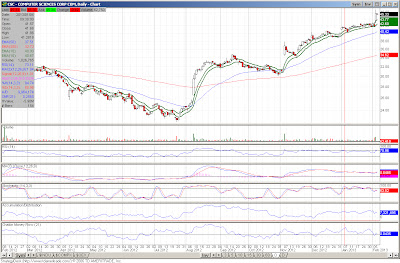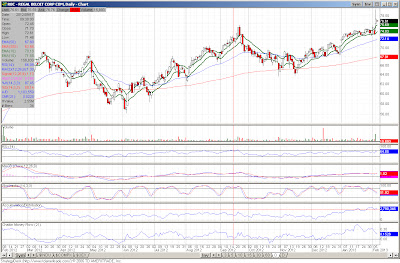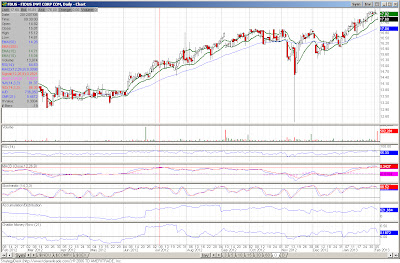From BCA Research Blog
I will provide an update on the gold stock timing models in a bit (hint: still not there) but thought I would provide some other comments on gold stocks.

G old equities are trading back near 2007 levels, despite a twofold increase in the price of gold. The underperformance of gold equities vis-à-vis the price of gold can be mostly explained by ETF flows.
Gold stocks have been cannibalized by the surge in ETF volumes, with P/E multiples moving inversely with ETF flows. Part of the reason is that during times of extreme risk aversion and safe haven demand, investors prefer physical gold.
If we are right that 2013H1 will be dominated by easing “tail risk”, then a gold share rerating (vis-à-vis the gold price) is likely. But even if “tail risk” stays elevated in 2013H1, there are reasons to believe the underperformance of gold shares vis-à-vis the bullion price is overdone.
Investor disappointment over the past three years has left gold equities cheap, unloved and under owned. The final catalyst for gold shares may well be intense investor pressure to contain cost overruns and focus on efficiency. Six gold mining CEOs lost their jobs in 2012.
Such shakeups usually herald a major shift in corporate strategy, and gold equities could do well, even if gold prices go nowhere. (tweet this!)
Bottom Line: Remain tactically long gold shares/short gold and strategically long gold equities.
I will provide an update on the gold stock timing models in a bit (hint: still not there) but thought I would provide some other comments on gold stocks.
Gold Shares Versus Gold Prices
The gold equity sell-off probably represents a nadir in investor sentiment, typical of major bottoms.G old equities are trading back near 2007 levels, despite a twofold increase in the price of gold. The underperformance of gold equities vis-à-vis the price of gold can be mostly explained by ETF flows.
Gold stocks have been cannibalized by the surge in ETF volumes, with P/E multiples moving inversely with ETF flows. Part of the reason is that during times of extreme risk aversion and safe haven demand, investors prefer physical gold.
If we are right that 2013H1 will be dominated by easing “tail risk”, then a gold share rerating (vis-à-vis the gold price) is likely. But even if “tail risk” stays elevated in 2013H1, there are reasons to believe the underperformance of gold shares vis-à-vis the bullion price is overdone.
Investor disappointment over the past three years has left gold equities cheap, unloved and under owned. The final catalyst for gold shares may well be intense investor pressure to contain cost overruns and focus on efficiency. Six gold mining CEOs lost their jobs in 2012.
Such shakeups usually herald a major shift in corporate strategy, and gold equities could do well, even if gold prices go nowhere. (tweet this!)
Bottom Line: Remain tactically long gold shares/short gold and strategically long gold equities.










































